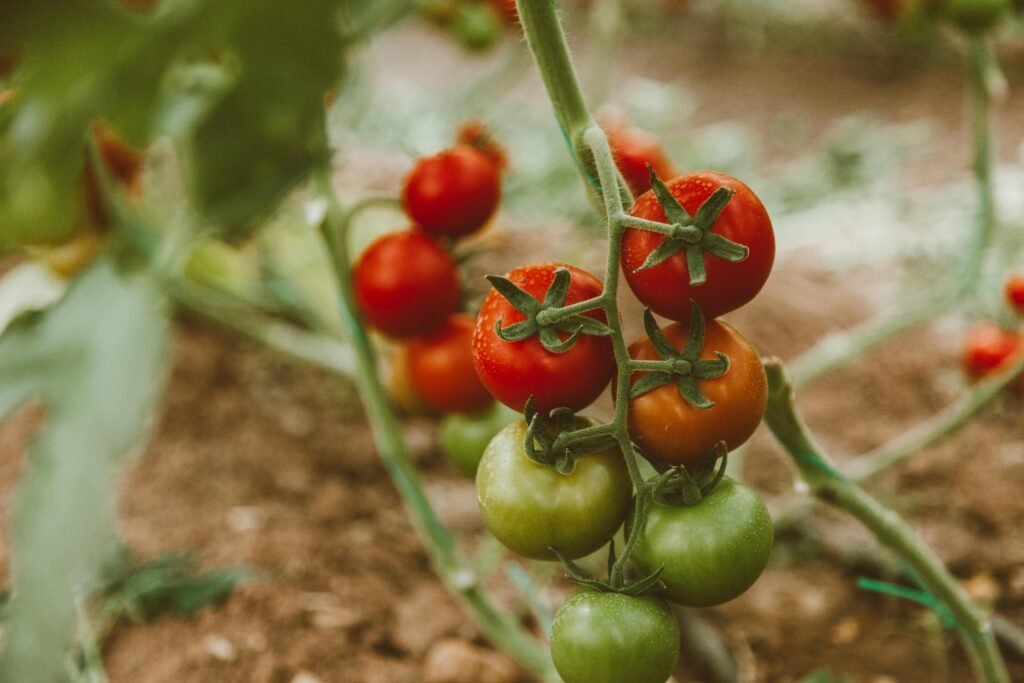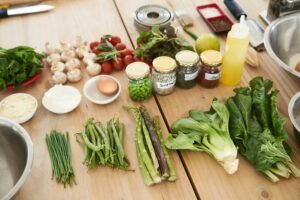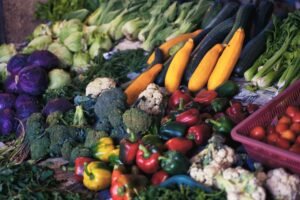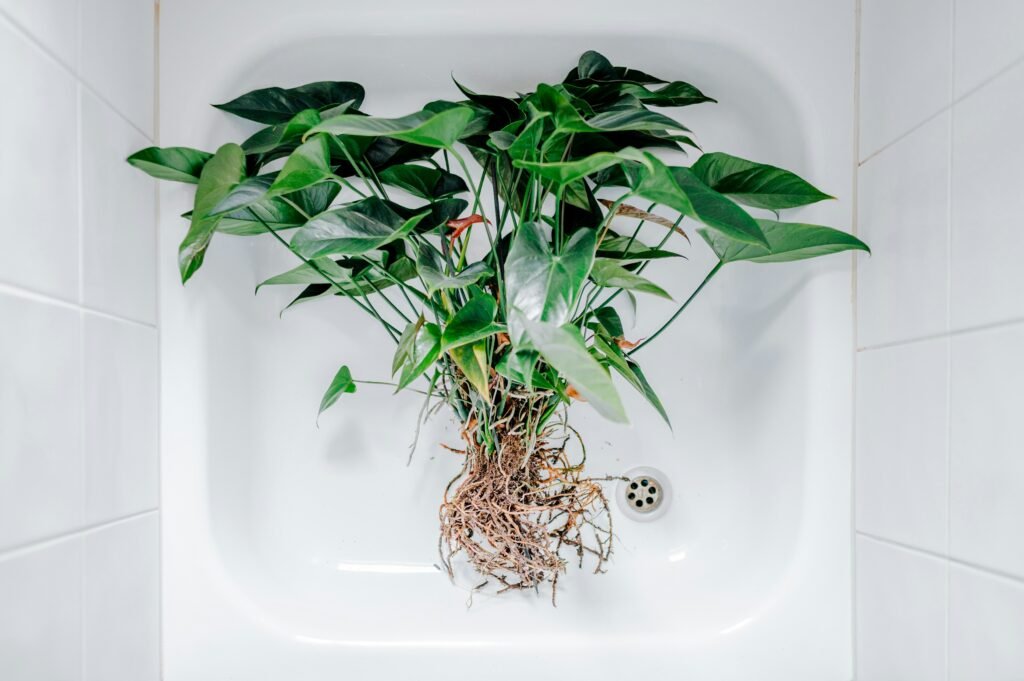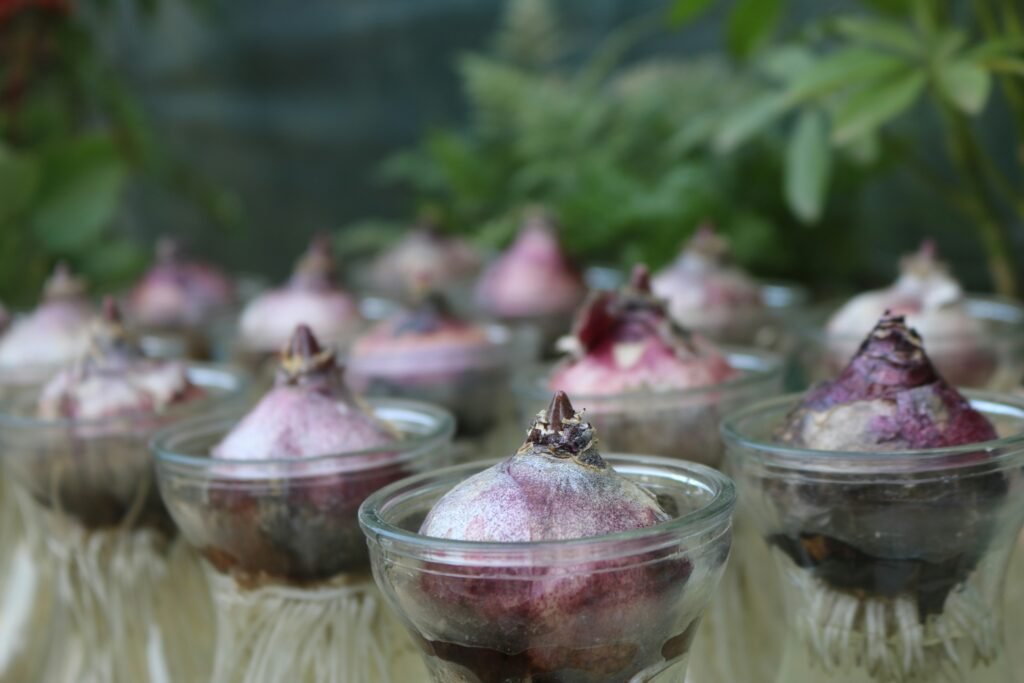Introduction to Hydroponics
Hydroponics is an innovative method of growing plants without soil, using nutrient-rich water solutions to deliver essential minerals directly to the plant roots. This technique has ancient roots, dating back to the Hanging Gardens of Babylon and the floating gardens of the Aztecs. Modern hydroponics has evolved significantly with advanced systems and technologies, making it a viable and efficient alternative to conventional soil-based farming.
The core principle of hydroponic farming is to provide plants with a balanced and readily available nutrient solution, allowing for precise control over their growth conditions. This method involves various techniques, such as nutrient film technique (NFT), deep water culture (DWC), and aeroponics, each offering unique advantages in terms of space usage, water efficiency, and plant productivity.
One of the major benefits of hydroponics is its sustainability. Traditional agriculture often requires substantial land, water, and fertilizers, which can lead to soil degradation, water scarcity, and environmental pollution. In contrast, hydroponic systems use significantly less water, as the nutrient solution recirculates within a closed system, minimizing wastage. Additionally, the absence of soil eliminates the need for pesticides and herbicides, reducing chemical runoff and promoting a healthier ecosystem.
The rise of urbanization and the increasing demand for fresh produce have propelled hydroponics into mainstream agriculture. Urban hydroponic farms, often set up in greenhouses, rooftops, and even shipping containers, are becoming more prevalent in cities. These farms are capable of producing a wide variety of crops year-round, contributing to food security and reducing the carbon footprint associated with transporting food over long distances. Commercial enterprises are also adopting hydroponic methods, recognizing their potential to enhance productivity and meet consumer needs for sustainably grown products.
Hydroponics represents a forward-thinking approach to agriculture, offering a sustainable, efficient, and scalable solution to meet the growing global food demand. As technology advances and more people become aware of its benefits, hydroponic farming is set to play a crucial role in the future of food production.
The Science Behind Hydroponic Systems
Hydroponic systems have revolutionized modern agriculture by enabling plant growth without soil. Instead of relying on traditional soil-based nutrients, hydroponics delivers essential minerals directly to plant roots via a water-based solution. This process begins by dissolving macro and micronutrients into water, creating a nutrient-rich solution that is consistently monitored and adjusted to maintain optimal concentrations. This direct access to nutrients significantly enhances plant growth rates and yield, particularly in controlled environments.
Various hydroponic systems exist, each utilizing different methods to deliver nutrients to the plants. One common system is Deep Water Culture (DWC), where plant roots are suspended in a highly oxygenated nutrient solution. The primary advantage of DWC is its simplicity and efficiency in maintaining nutrient uptake. However, it requires careful oxygenation management to prevent root diseases.
Nutrient Film Technique (NFT) offers another intriguing approach. In NFT systems, a thin film of nutrient-laden water continuously flows over plant roots housed within a sloped channel. This method ensures constant supply of oxygen and nutrients, promoting vigorous growth. While efficient and requiring less water compared to DWC, NFT systems are more prone to pump failure and require meticulous monitoring to prevent interruptions in nutrient delivery.
Aeroponics represents a more advanced hydroponic technique, where roots are misted with a fine nutrient solution at regular intervals. This method boasts superior growth rates due to unmatched oxygen availability at root level. Despite its high efficiency, aeroponics systems demand precision in nutrient delivery and maintenance, making them more complex and costly to manage.
Each hydroponic system offers unique advantages and challenges. For growing fruit-bearing plants, factors such as plant type, growth stage, and resource availability must be carefully considered. While DWC and NFT systems may suffice for smaller fruit-bearing plants, aeroponics’ precision can be advantageous for diverse or high-value crops. Understanding the science and mechanics behind these systems allows growers to optimize their hydroponic setups for fruitful yields.
Choosing the Right Fruit-Bearing Plants for Hydroponics
Hydroponics, a method of growing plants without soil, has proven to be a viable and efficient solution for cultivating a wide variety of fruit-bearing plants. Not all fruits are equally well-suited to hydroponic systems, however, so it’s imperative to make informed choices. Factors such as growth habits, nutritional needs, and space requirements play pivotal roles in the successful hydroponic cultivation of fruit-bearing plants.
Tomatoes, strawberries, and peppers are among the most popularly grown fruit-bearing plants in hydroponic systems. These plants have demonstrated consistent success due to their relatively straightforward nutritional needs and adaptable growth habits. Tomatoes, for instance, thrive in hydroponics as they benefit from the controlled environment, reducing the risk of soil-borne diseases and pests. Strawberries also flourish under hydroponic care, producing bountiful, juicy fruits with a significantly shorter harvest time compared to traditional methods. Peppers, with their compact growing nature, make excellent candidates for small-space hydroponic setups, providing vibrant yields in controlled environments.
Apart from the commonly grown varieties, hydroponics also opens avenues for cultivating more exotic fruit-bearing plants that might struggle in conventional soil-based systems. For example, dwarf citrus trees and dwarf pomegranates can adapt well to hydroponic conditions. These plants generally require careful attention to their light and temperature needs but can produce excellent fruit quality when managed correctly in a hydroponic setup.
When selecting fruit-bearing plants for hydroponics, growers must carefully consider various factors. Growth habits are essential, as climbing or sprawling plants may require specific structural support. Nutritional needs must also be meticulously managed to ensure plants receive balanced nutrients tailored to their developmental stages. Moreover, space requirements cannot be overlooked; while some plants like peppers do well in compact systems, larger plants may necessitate more expansive setups.
In conclusion, hydroponics presents an exciting opportunity to grow a diverse range of fruit-bearing plants successfully. By understanding and addressing their unique requirements, from nutritional needs to space considerations, cultivators can maximize their hydroponic yields and enjoy fresh, home-grown fruits all year round.
Nutritional Requirements and Management
Fruit-bearing plants have unique nutritional needs that must be met for them to thrive in a hydroponic setup. These plants require a balanced supply of macro and micronutrients to support their growth and fruit production. Key macronutrients include nitrogen (N), phosphorus (P), and potassium (K), often referred to as the NPK ratio. Each of these nutrients plays a pivotal role: nitrogen promotes foliage growth, phosphorus aids in root development and flowering, and potassium supports overall plant health and fruit quality.
In addition to these macronutrients, fruit-bearing plants also need a range of micronutrients such as calcium, magnesium, sulfur, and trace elements like iron, manganese, zinc, copper, boron, and molybdenum. Hydroponic nutrient solutions must be carefully formulated to deliver these nutrients in appropriate concentrations. Commercially available hydroponic nutrient solutions are usually designed to provide a balanced mix of these essential elements, making it easier for growers to meet their plants’ needs.
Monitoring and adjusting nutrient levels are critical for successful hydroponic fruit production. Nutrient imbalances or deficiencies can lead to poor plant health and reduced fruit yield and quality. For instance, a calcium deficiency may cause blossom-end rot in tomatoes, while insufficient potassium can impair fruit size and flavor. Regular testing of nutrient solution using electrical conductivity (EC) meters and pH meters helps ensure that plants receive the correct nutrient concentrations and that the pH level remains optimal for nutrient uptake.
Troubleshooting nutritional issues involves observing plant symptoms and making the necessary adjustments to the nutrient solution. Common signs of nutrient deficiencies include yellowing leaves, poor growth, and reduced fruit production. Addressing these issues may require recalibrating the nutrient mix, adjusting the pH, or supplementing specific nutrients. Periodic flushing of the hydroponic system can also help prevent the build-up of salts and other compounds that can interfere with nutrient uptake.
Ultimately, managing the nutritional needs of fruit-bearing plants in a hydroponic system is a dynamic process that requires careful attention and regular adjustments to ensure optimal plant health and maximum fruit yield.
Environmental Conditions and Control
Growing fruit-bearing plants hydroponically requires meticulous control of environmental conditions to ensure optimal growth and fruit production. Key factors that need to be monitored and managed include light, temperature, humidity, and CO2 levels. Each of these elements plays a critical role in the plant’s development and can significantly impact the overall yield and quality of the fruit.
Light is one of the most important factors as plants rely on photosynthesis to grow and produce fruit. In a hydroponic setup, grow lights, such as LED and high-intensity discharge (HID) lights, are commonly used to provide the necessary light spectrum and intensity. These lights can be adjusted to mimic the natural daylight cycle, ensuring that plants receive adequate light even in the absence of natural sunlight.
Temperature control is also crucial for hydroponically grown fruit-bearing plants. Most plants thrive in temperatures between 70°F and 85°F during the day and slightly cooler temperatures at night. HVAC systems play a vital role in maintaining these temperature ranges and stabilizing the climate inside the growing area. Additionally, temperature consistency helps in the prevention of plant stress and diseases.
Humidity levels must be carefully managed to facilitate proper plant transpiration and nutrient uptake. A relative humidity level between 50% and 70% is generally recommended for most fruit-bearing plants. Dehumidifiers and humidifiers can be utilized to regulate the moisture levels in the air, ensuring they remain within the optimal range.
CO2 enrichment is another critical aspect to consider. Elevated CO2 levels can significantly boost plant growth by enhancing the rate of photosynthesis. CO2 generators and automated monitoring devices are often employed to monitor and control CO2 concentrations within the growing environment.
To maximize growth and fruit production, automated monitoring systems are invaluable. These technologies offer real-time data and controls, allowing for precise adjustments to the environmental conditions. By using the right equipment and optimizing these key factors, growers can create an ideal environment for fruit-bearing plants in a hydroponic system.“`
Pollination Techniques for Hydroponic Gardens
Pollination is a crucial process for the successful cultivation of fruit-bearing plants, as it directly impacts fruit production and quality. In hydroponic gardens, where traditional pollinators may not be present, ensuring effective pollination can be challenging. Fortunately, several techniques can be employed to achieve optimal pollination outcomes.
Hand pollination is one such method, particularly effective for small-scale hydroponic setups. By mimicking the natural process, gardeners can transfer pollen from the male flowers to the female flowers using tools like small brushes or even cotton swabs. This technique is especially useful for plants like tomatoes and peppers, which have distinct male and female flowers.
Another approach involves encouraging natural pollinators, such as bees, within the hydroponic environment. Introducing bee-friendly plants and flowers can attract these beneficial insects, facilitating natural pollination. However, maintaining a controlled environment to support the bees’ ecological needs can be demanding and may not be feasible for all hydroponic systems.
Mechanical pollination tools offer a more technologically advanced solution. Devices such as electric pollinators and vibrating wands can efficiently transfer pollen by mimicking the buzzing of bees or the wind’s natural movement. These tools are particularly advantageous in larger hydroponic gardens, where manual pollination may be impractical due to scale.
Different types of fruit-bearing plants pose unique pollination challenges. For instance, plants like strawberries, which often have self-pollinating flowers, may require minimal intervention. However, crops such as cucumbers and melons with separate male and female flowers may demand more intensive pollination efforts. It’s essential to understand the specific needs of each plant species to implement the most effective pollination strategy.
In conclusion, successful pollination in hydroponic gardens requires a tailored approach, combining various techniques based on the specific requirements of the plants and the scale of the hydroponic system. By leveraging methods such as hand pollination, natural pollination, and mechanical tools, growers can ensure robust fruit production and high-quality yields.
Pest and Disease Management
Effective pest and disease management is crucial for the successful cultivation of hydroponically grown, fruit-bearing plants. Although the controlled environment of hydroponics can mitigate some traditional soil-related issues, it is not entirely immune to pests and diseases. Understanding the common threats and adopting robust strategies to manage them is essential for maintaining healthy and productive plants.
Common pests that may affect hydroponic gardens include aphids, spider mites, whiteflies, and root aphids. These pests can cause significant damage by feeding on plant tissues, stunting growth, and reducing yield. On the disease front, pathogens such as Pythium (root rot), powdery mildew, and Botrytis (gray mold) are frequent culprits. They thrive in the humid, warm conditions often found in hydroponic setups.
Integrated Pest Management (IPM) is a holistic and sustainable approach to managing pests and diseases. IPM combines biological, cultural, physical, and chemical control methods to minimize harm to plants and the environment. Regular monitoring is a cornerstone of IPM, enabling early detection of any issues. Sticky traps, visual inspections, and frequent checks of roots and leaves can help in identifying pest presence before they become problematic.
Biological control methods are highly effective in hydroponics. Introducing natural predators such as ladybugs, predatory mites, and beneficial nematodes can help keep pest populations in check. Additionally, using microbial inoculants can suppress disease-causing pathogens by enhancing the beneficial microbial community around plant roots.
When it comes to treatments, opting for safe and non-toxic options is paramount. Neem oil, insecticidal soaps, and horticultural oils are effective yet safe choices for managing pest infestations. For diseases, organic fungicides and the use of disease-resistant plant varieties can be beneficial. Ensuring proper air circulation, maintaining optimal humidity levels, and employing UV sterilization can further reduce the risk of disease outbreaks.
Maintaining plant health through balanced nutrition and stress reduction is essential. Healthy plants are more resilient to pests and diseases, making preventive care a priority. Regularly cleaning and sterilizing equipment and grow areas can also prevent pathogen buildup.
Harvesting and Post-Harvest Handling
Successfully cultivating hydroponically grown fruit-bearing plants requires precise timing and technique during the harvest to ensure peak ripeness and optimal quality. Monitoring the ripeness stage is critical; check for visual cues like color change and firmness, which vary distinctively across different fruit species. Utilizing a refractometer can help measure sugar content, ensuring the fruit has reached its ideal sweetness before harvesting.
The actual harvesting process calls for careful handling to minimize physical damage to the produce. Use clean, sterilized tools to cut fruits from their stems, and consider wearing gloves to prevent contamination. It’s advisable to perform the harvesting during the cooler parts of the day to maintain the produce’s freshness and mitigate the risk of heat stress, which can affect fruit quality.
Post-harvest handling is equally important in maintaining the quality and extending the shelf life of hydroponic fruits. Immediate cooling after harvesting using methods like hydrocooling or forced-air cooling is essential to remove field heat and slow down respiration rates. Proper storage plays a crucial role; keep fruits in temperature-controlled environments, typically ranging from 32°F to 45°F, depending on the fruit type. Relative humidity should also be maintained between 85% and 95% to minimize moisture loss and prevent shriveling.
Sanitation is another key factor in post-harvest handling. Clean and sanitize storage facilities and containers regularly to prevent the growth of pathogens that could spoil the produce. Utilize food-safe sanitizers to rinse fruits before storage to eliminate potential contaminants. Gentle handling during washing and packaging processes is imperative to avoid bruising and abrasions, which can compromise fruit quality.
Implementing these guidelines for harvesting and post-harvest handling will significantly preserve the freshness and extend the shelf life of hydroponically grown fruits, ensuring they remain in top condition from the farm to the consumer’s table.
